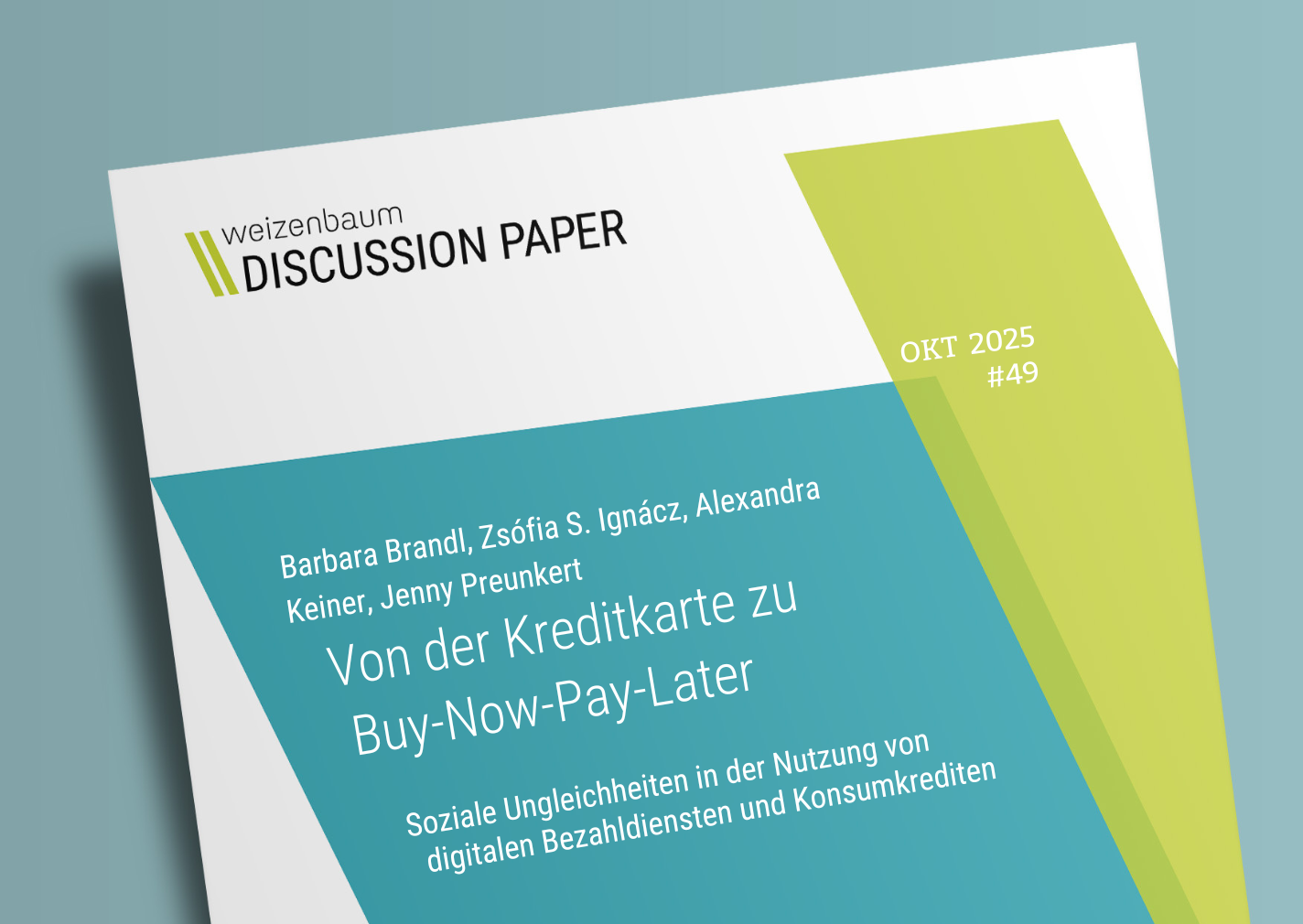
How are digital payment services reshaping financial inclusion in Germany?
10/23/2025A new study using data from the Weizenbaum Panel 2024 shows how income, age, gender, and digital competence shape financial inclusion in Germany.
Digitalization has fundamentally transformed our relationship with money — from traditional checking accounts to online banking, mobile wallets, and new services such as “Buy Now, Pay Later” (BNPL). This evolution has also reshaped patterns of financial inclusion. Based on data from the Weizenbaum Panel 2024, Weizenbaum researcher Alexandra Keiner, together with Barbara Brandl and Zsófia S. Ignácz (both Goethe University Frankfurt), and Jenny Preunkert (University of Kassel), examined how access to payment options and consumer credit is distributed in Germany — and what new forms of inequality are emerging.
The results show that while people with higher incomes and stronger digital skills are more likely to use digital payment methods, older or lower-income groups still rely more heavily on cash. Financial inclusion, therefore, no longer depends solely on income but increasingly on digital literacy and age.
The study highlights that financial participation in the digital era is taking on new forms. Alongside economic factors, digital and social dimensions are becoming more prominent. The findings open up important perspectives for an inclusive digital financial policy — and raise crucial questions about how digital innovations can be designed to promote inclusion rather than exclusion.